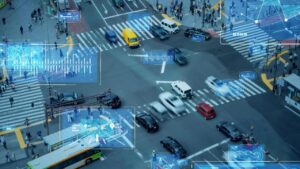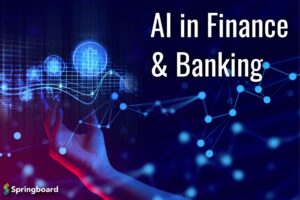
AI is present in almost every aspect of our existence – social, economic, political, and cultural – as a cutting-edge technology that molds, defines, and facilitates our existence and social relations. It is pervasive, and can sometimes be virtually invisible, serving as an unseen support for improving the effectiveness and ease of conducting transactions. In this article, this author will discuss some of the integrated examples that show where Artificial Intelligence has become part of everyday life, and how it helped to create new solutions that were beyond the reach of most consumer technologies before.
1. Smart Assistants and Smart Homes

Voice-Activated Assistants
Artificial Intelligence voice control devices as a part of people’s households have become irreplaceable with the help of such devices as Alexa, Google Assistant, and Siri. These devices’ NLP allows for the interpretation of requests and commands to make daily tasks a bit more convenient. Assistants that range from smartphones with virtual assistants like Siri, which can remind users to take a shower, to smart devices like Nest thermostats, which can turn on heating upon the arrival of its user, have greatly changed the way homes are run.
Smart Home Automation
Another key factor that cannot be left out is artificial intelligence, which makes devices in smart homes smart enough to learn our habits and preferences. Embedded devices like Nest Learning Thermostat regulate the temperatures we prefer depending on our schedules saving energy and hence costs. Technologically advanced security systems are now in existence to protect homes; these systems are smart in sensing any abnormal activities in the home and immediately reporting to the occupants, therefore increasing home security.
2. AI in Healthcare

Medical Diagnostics and Treatment
It is incredible that in such fields as medicine, AI plays a significant role especially in the diagnosis of diseases and in determining the most appropriate treatment. These algorithms successfully diagnose an image of a patient’s body or organ as being healthy or that it has cancer, a fracture, or a neurological disease, in a much shorter time than it would take with other techniques. Such conditions must be diagnosed at an early stage to facilitate effective treatment and increase the chances of improved patient outcomes.
Personalized Medicine
AI can create the mechanism needed for the personalized approach to medicine, including genetic profiling and information, user’s lifestyle, and other factors. AI can process a large amount of data and can anticipate the reactions of patients to particular remedies, it thus possible for healthcare providers to provide treatment with high-impact outcomes and fewer side effects.
3. Transportation and Mobility

Autonomous Vehicles
Another impressive application area for AI is the Autocar industry where cars are designed to drive independently. Tesla, Waymo, Uber, and several other organizations are actively working toward creating self-driving cars which have the potential to disrupt the transport industry. These vehicles rely on artificial intelligence to drive through highways and city thoroughfares, avoiding and making instant decisions about potential hazards thereby minimizing traffic and road accidents attributable to human factors.
Traffic Management
AI also plays an important role in traffic management systems, where it processes data from various sources and deals with traffic light controls required for traffic congestion and its general flow. Some of the world’s most populous cities, – Los Angeles and London to name but a few, now employ AI solutions to improve traffic flows engrossing the urban environment and diminish the negative repercussions of transport infrastructures on climate.
4. Education and Learning

Personalized Learning Experiences
In the education sector, AI is even making students achieve customized learning. From teachers, AI-enabled sites such as Khan Academy and Coursera use learning pace and learning style to present additional resources and further assistance. They will be able to understand lesson contents much more easily while studying, as well as maintain adequate interest in their academic work.
Automated Administrative Tasks
It is also playing a significant role in the office automation in schools and colleges as well. For instance, the use of automation in admission, tracking student records, and provider timetables consequently comes with less burden on educators to handle these tasks hence giving adequate time to teach and interact with students.
5. Customer Service and Support

AI Chatbots
This has led to the use of artificial intelligence in chatbots to answer customers’ questions in customer serviceCustomer Service. Zendesk and Salesforce have applied AI chatbots to deal with queries common in organizations, allowing human agents to deal with challenges that may require their attention. These chatbots enable organizations to improve the satisfaction of customers due to the provision of fast and efficient responses.
Sentiment Analysis
Other areas of AI application include natural language processing, including analyzing the mood of customers’ posts on social networks, their reviews, or surveys. Through processing large quantities of such data, the companies will be in a position to enhance their products, services, and even ways of handling customers thus promoting customer relationships.
6. Entertainment and Media

Content Recommendations
AI is changing the way entertainment consumers find content by offering a selection of content that is unique and most suitable for them. Popular streaming platforms namely Netflix, Spotify, and YouTube employ artificial intelligence-driven algorithms to draw conclusions on the kind of content most likely to appeal to a specific user by basing such conclusions on the history of previous content viewed or listened to by the user. Thus, it positively corresponds to the user experience and makes the audience more interested.
Content Creation
It is also noticeable the advance of AI in content generation as well. It is possible to write articles, scripts, and even poems, just mentioning OpenAI’s GPT-3 which as a result of its operation, creates text that is very similar to a human author. More notably in visual arts where through the use of AI-derived platforms artists can design exquisite art masterpieces as well as enhance their artistic creations.
7. Finance and Banking

Fraud Detection
In the case of finance and banking, AI is an indispensable method of preventing fraud and theft. What AI systems do is look at transaction patterns and they look for any irregularities that are most likely due to fraudulent entities. It also ensures that financial institutions take appropriate measures to curb fraud and safeguard their customers’ property.
Investment Strategies
Another area that has been positively impacted by AI relates to investments through algorithmic trading and robo-advisors. These tools refer to analyses of the current trends and data in the market and help investors to come up with sound decisions regarding their investments and also have advisory services that are customized depending on risk tolerance and financial objectives of the investors.
8. Retail and E-commerce

Personalized Shopping Experiences
It is noteworthy that AI is gradually becoming a driving force in the sphere of retail and e-commerce by positively changing the approach to building customer experiences. As discussed in the case of Amazon and Alibaba, websites build their AI recommendation systems to predict customers’ preferences based on their browsing and purchase history and provide them with a more satisfying and personalized shopping experience thus, increasing their sales.
Inventory Management
Inventory management by use of AI accelerates the re-filling/stocking frequency of stores to accomplish just in time to minimize the excess stocking that results in waste. In terms of sales, forecasting customer demand enables AI to ease and enhance the retail sales cycle.
9. Environmental Conservation

Climate Monitoring
AI is increasingly being used in the catalyzing and tracking of the climate and other ecological data. Modern AI-generated models simulate future climate, monitor species’ stocks, and estimate ecosystems’ conditions for supporting conservation and decision-making practices.
Energy Management
In the domain of energy, they make the efficiency of energy-controlling systems lower the demand and prevent wastage. AI manages the supply and demand of smart grids and enables them to incorporate renewable energy resources and reduce carbon emissions.
10. Daily Routine Optimization

Time Management
AI enhances the human life experience by enabling the creation of optimum daily schedules through the use of sophisticated algorithms. Modern applications like Trello or Asana integrate artificial intelligence as they help underline tasks and assign deadlines, sending notifications when something has been due for a while.
Health and Wellness
AI mobile health and wellbeing applications assist individuals in the restoration of health. Examples of these applications are MyFitnessPal where the application utilizes artificial intelligence in tracking exercises, checking daily calorie intake, and coming up with a plan to help the user meet their fitness goals. The other application is a Fitbit.
AI Daily Life Uses With Types of AI
Another irrefutable innovation that has paved its way into people’s everyday existence is Artificial Intelligence, which makes daily processes and activities more effective and convenient in various spheres and aspects of life. With the launching of more sophisticated and accurate AI technology, humans are destined to experience a closer HCI and therefore a new chapter for more extensive innovation for the future.

Leave a Comment